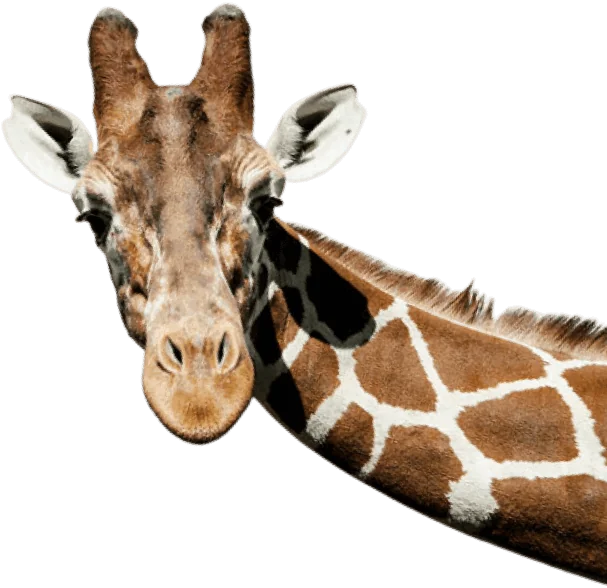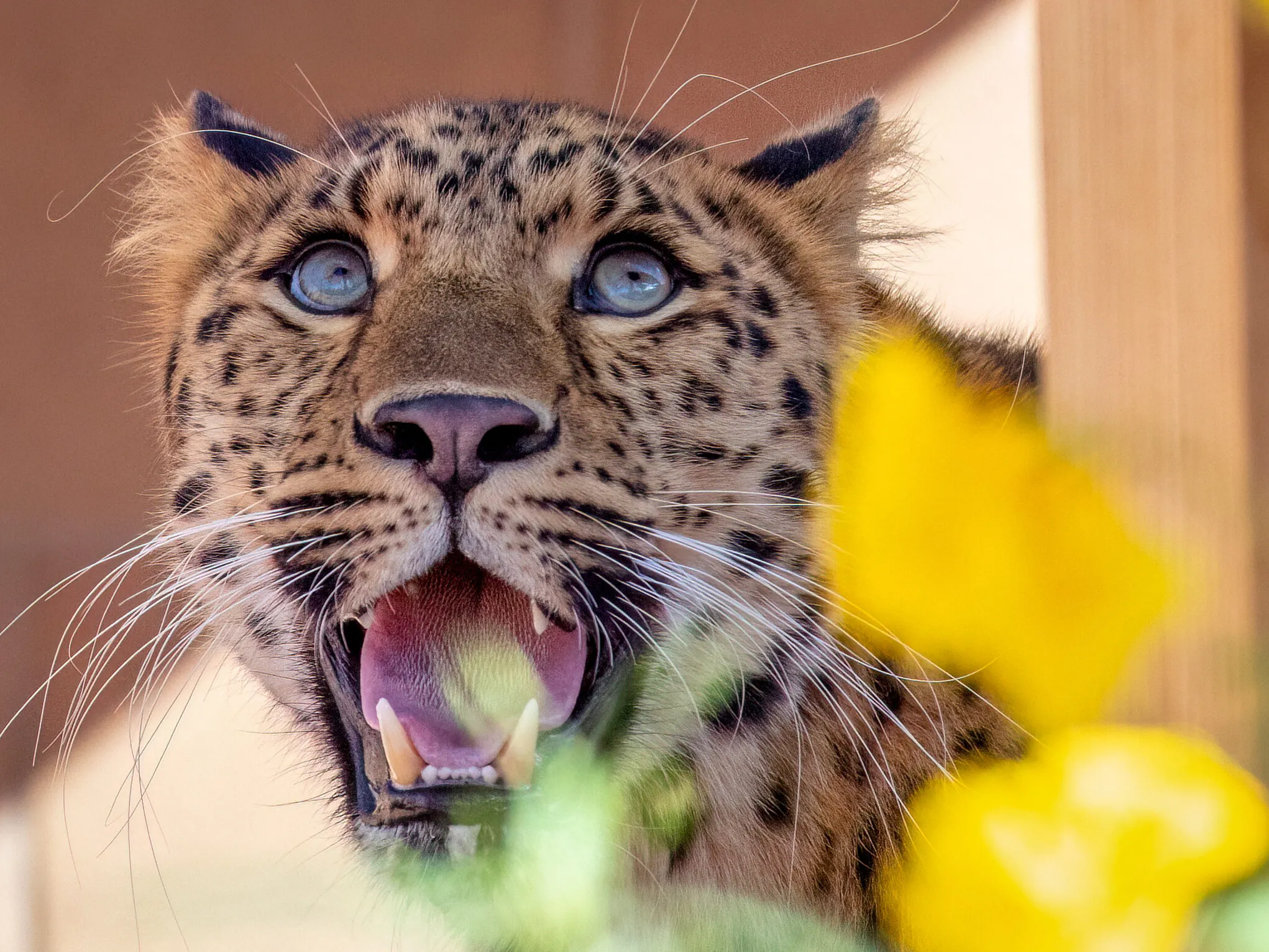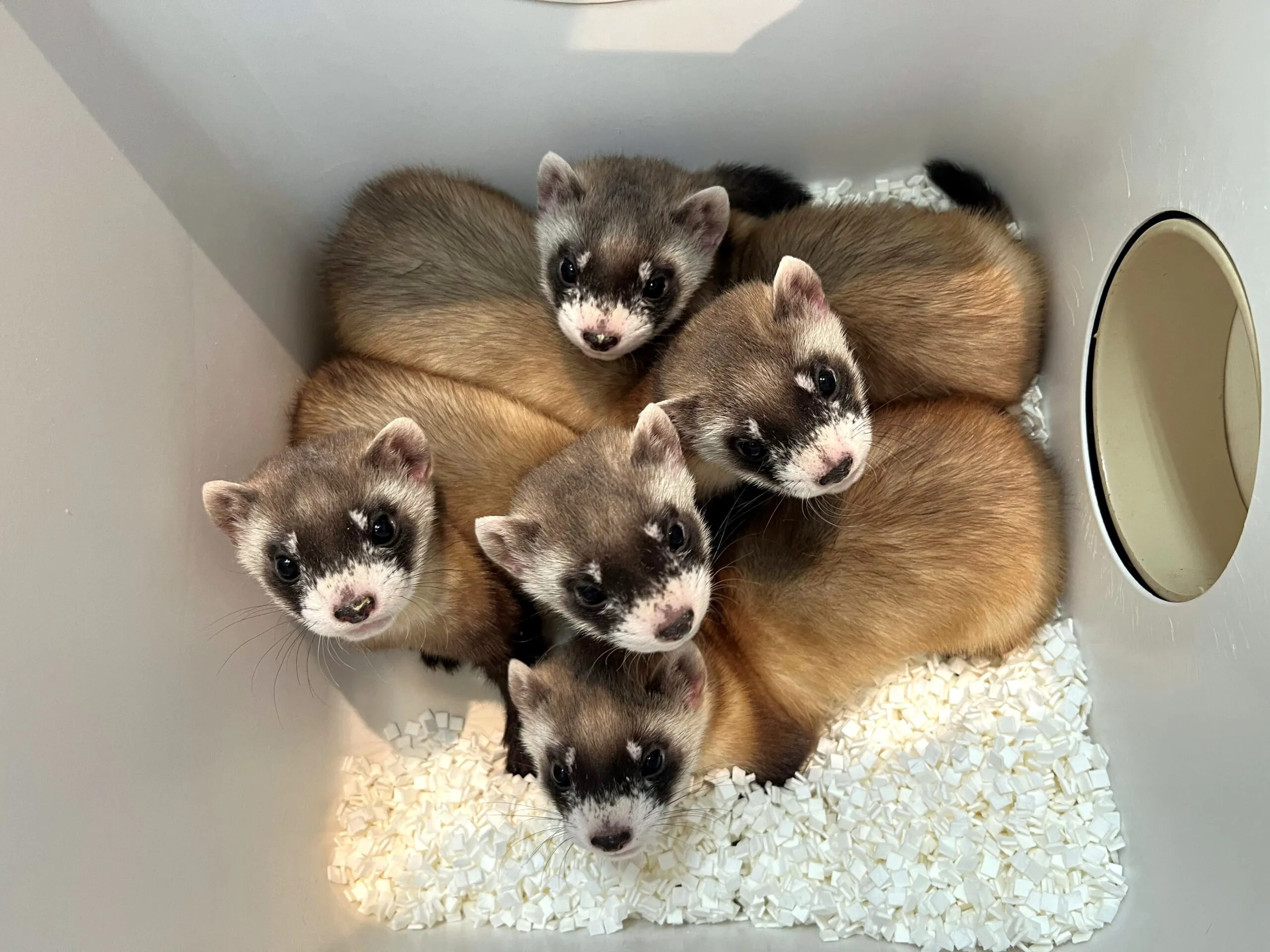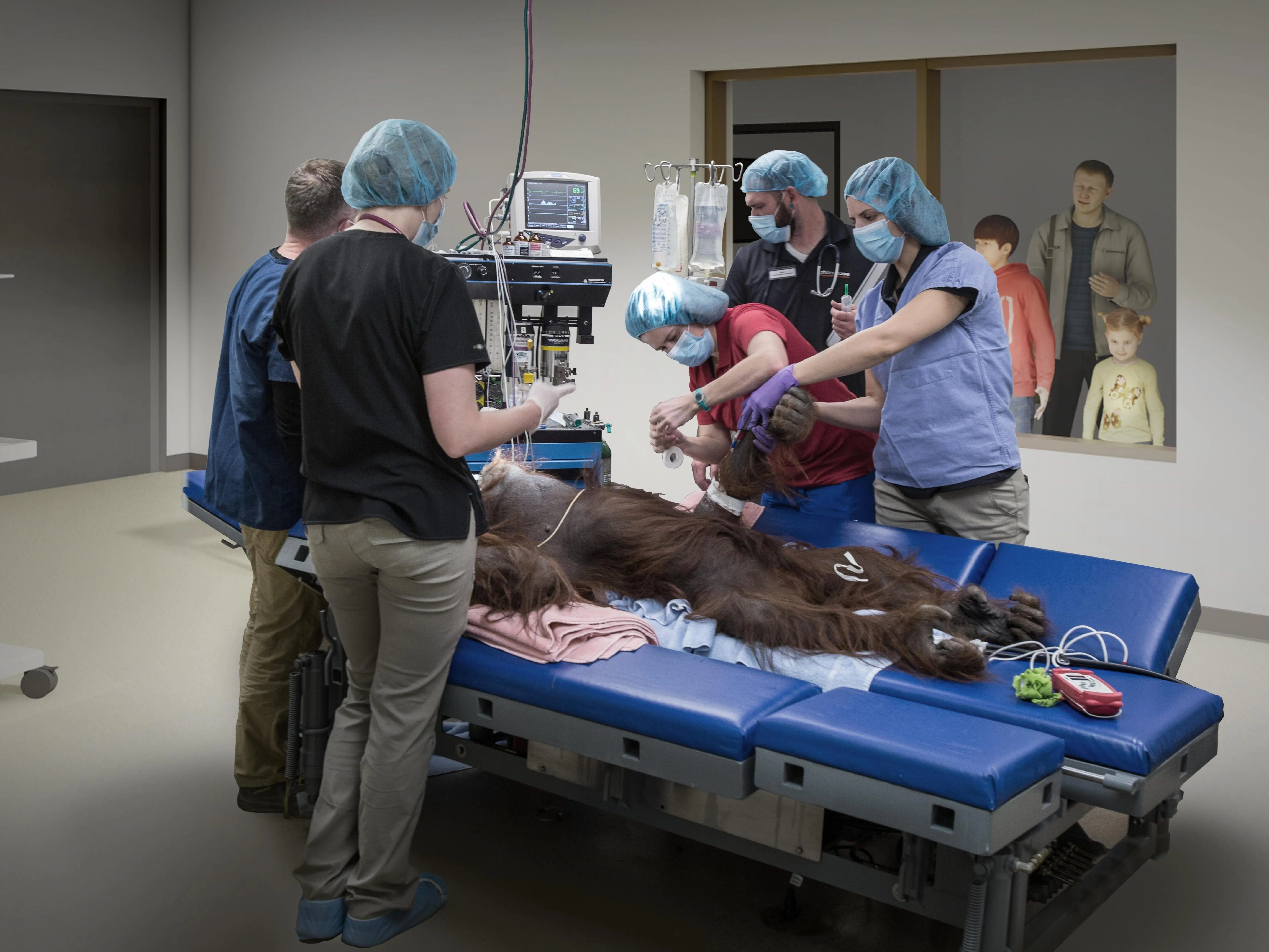Amur Leopard
Panthera pardus orientalis
Cat Coats
Leopards sport a spotted coat that allows them to blend into their environment when hunting. The rose-like spots on their backs, flanks and limbs are called rosettes. Each individual cat has its own pattern, and they are larger and more widely spaced on Amur leopards than on other leopard subspecies. Those subspecies found in forests tend to have darker and denser rosettes, while those found in more arid regions tend to be lighter colored. As the northernmost-living leopard subspecies, the Amur leopard’s coat grows especially long in winter and thins out for summer.
Black Panther?
There’s a lot of confusion about the term black panther. For starters, the word panther does not refer to a particular species. It’s a non-scientific term that’s often used to describe leopards, jaguars or mountain lions. A black panther is a leopard or jaguar that has melanism, a rare genetic condition that makes its fur appear black. While about one third of all cat species can be melanistic, there are no confirmed cases of melanistic mountain lions. So, mountain lions can be panthers but not black panthers.
Leopards Under Pressure
Leopards are under the same pressures as large predators everywhere: poaching, loss of prey species, loss of habitat, conflict with humans etc. Although still found in much of Africa and parts of the Middle East and Asia, they are gone from most of their historical range. Amur leopards face the additional threats of agricultural fires and the challenges that arise when protecting species across political boundaries. Fewer than one hundred Amur leopards are thought to remain in their natural habitat.
The Phoenix Zoo supports the efforts of WildCats Conservation Alliance to study and protect Amur leopards in their habitat. The Zoo also funds conservation-focused education and outreach in the communities that live nearby.

Diet: deer, boar, small mammals
Zoo Diet: specialized carnivore meat, whole prey (mice, quail, rats, rabbits), bones
Habitat: forests
Weight: 66 – 132 lbs


Plan your visit today!
The Phoenix Zoo is one of the largest non-profit zoos in the U.S., caring for over 3,000 animals, with nearly 400 species represented, including many threatened/endangered species.







